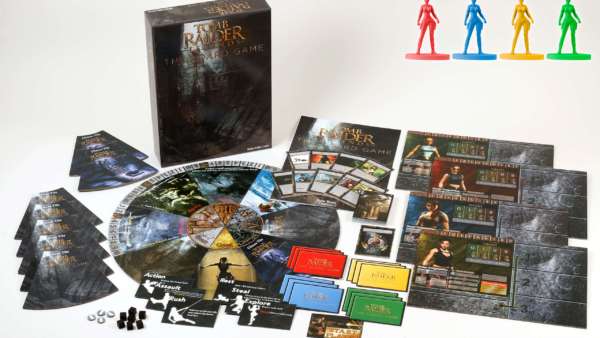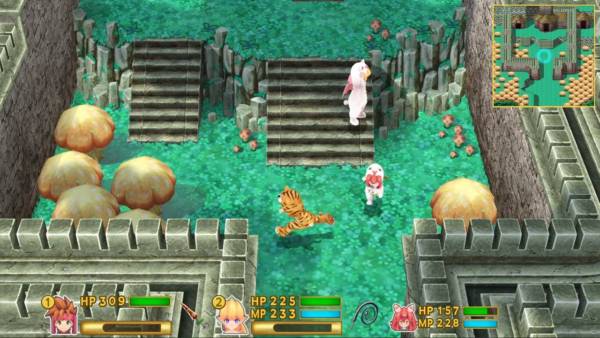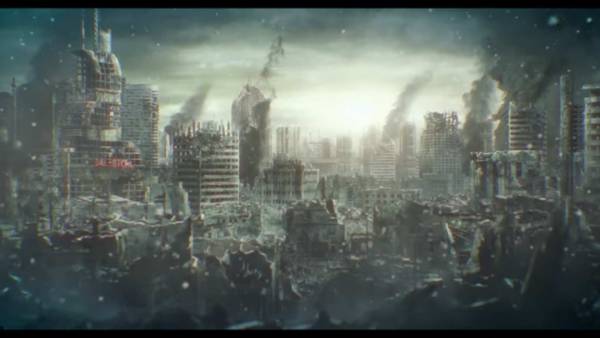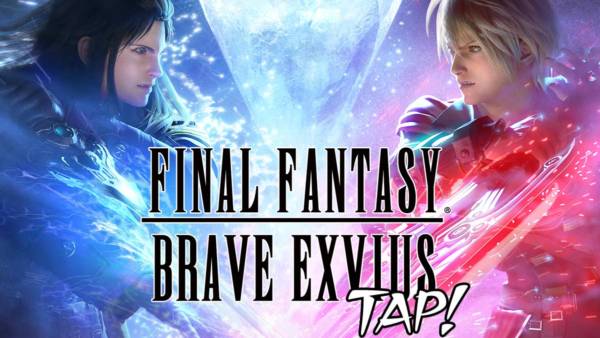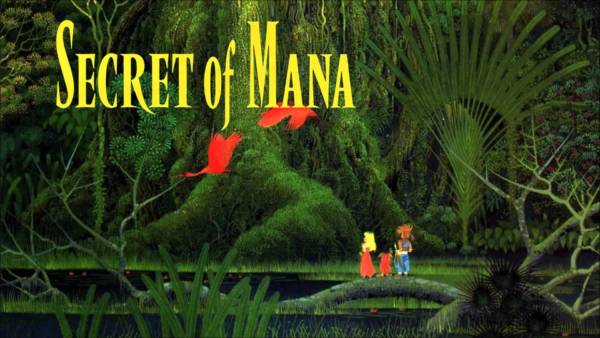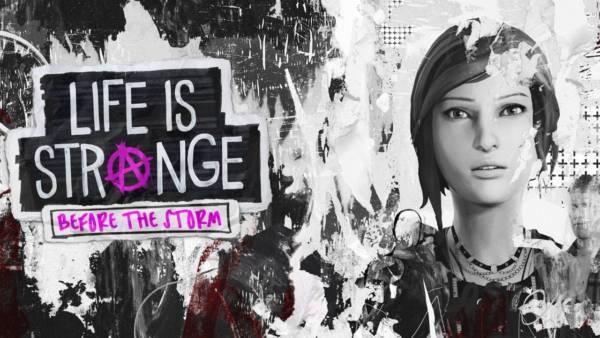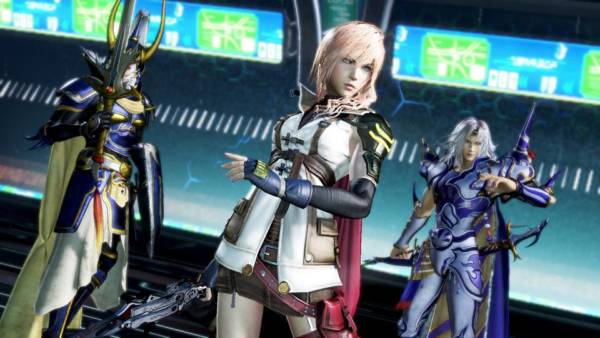It would be easy to describe Thief by what it isn’t, rather than what it is. It isn’t Dishonored, it isn’t a direct sequel to the rest of the Thief series, and it isn’t that great. That isn’t a fair way of reviewing something however, and I don’t want to do things the easy way anyway. So what IS Thief?
The story takes many nods from the first three Thief games, yet takes place in its own canon. Thief gives the obligatory lip service to Garrett’s previous adventures, but this goes back to square one. Replacing the world of the technology obsessed Hammerites and nature loving Pagans is the technology obsessed Baron Northcrest and nature loving Graven. A world of politics and grand schemes plays out around a handful of central characters, but mostly Garrett, thief extraordinaire.
Not much can be said of the story and it can be described with one word, charmless. After a short directed opening in which we meet Garrett’s thoroughly irritating ex-protégé, which ends with her dying, the plot fast-forwards a year where it wants you to find out what happened to her. The impetus to find out what happened during the first 30 minutes for the next 12 or so hours isn’t strong enough. Apart from that Thief is perfectly happy to remind you that the Baron isn’t a very nice guy and The Graven are the new cool kids because they like nature and want to legalize weed or something.
All of the characters are perfectly happy to spout their motivations at Garrett, seeing no reason not to trust a man who makes a profession from being an untrustworthy person. It is all gruff men saying they know what is best and Garrett passively doing what they say, or occasionally doing so while mildly annoyed. Eidos-Montreal obviously spent a lot of time and effort making all of the characters look memorable and interesting, but no amount of costume design makes up for an uninteresting individual at a fundamental level.

This Approach Is Not Advised. Garrett Basically Falls Over To Evade.
Overall, the sound design is a mixed bag. While creeping on the inhabitants that like to spend their nights wondering the streets everything fits perfectly well. Music takes a step back to let the oppressive nature of The City soak in, and audio cues ramp up as you edge closer to danger. Once you hit that tipping point however, any sense of tension shatters as the music becomes so intense and unfitting that you may hit quick-load just to escape it.
This is all window dressing however to the real star of the game, The City. While unimaginatively named, The City is surprisingly visually striking despite being primarily crafted from browns and greys. If anything Thief is an experience through atmosphere more than story, in no small part because of The City. Cramped, multi-story buildings loom overhead, covered in ever present networks of pipes and layers of dirt and grime. Core missions may take Garrett to the weirder parts of the world, but the hub area of Stone Market is where Thief, at first, truly shines.
Sadly this charm slowly wears away due to poor level design, forcing massive amounts of backtracking and occasional confusion. Split into multiple instances, larger areas such as Stone Market have very specific transition points. Instead of something recognisable and easy to navigate to, like a gate or door, Thief attempts to mask load times by having Garrett clamber through rubble or open a small window all while you mash the action key. Side-objectives are placed all over the map, meaning between every main mission you could be covering the same area almost half a dozen times. It makes longer trips almost insufferable as you have to amble over the same specific route of balconies and beams that takes twice as long as something more direct, and the initial excitement of finding every nook and cranny is worn away as you revisit the same dark alleyways over and over again.
The reward for looking into every crevice however is, of course, the precious swag. Everything worth taking glitters with a silvery hue, even if it is only someone’s dining utensils. Thief has you take everything that isn’t nailed down, and while the core missions task you with going after only one object, Garrett can walk away with a couple swag bags worth of loot. It is weird then, as an infamous thief only wanting to take the biggest and shiniest things, that you can take everything from teacups to candle-holders. Even though it may seem odd to pinch nearly everything, it holds an almost addictive quality, one which gets worse as you unlock ways of opening more areas during the first few missions.
Rarer items, such as paintings, jewellery and plaques are the real prizes, usually hidden behind a puzzle or a particularly difficult section. This is where the new “focus” ability comes in useful, highlighting everything of use in the area. It is a quick, and occasionally dirty, way of finding out how to clear a room, and can easily become a crutch. The option to create your own difficulty can alleviate this issue somewhat by putting restrictions on yourself, but for the average player this faux-detective vision can take the mystery from finding out what is behind the next corner, be it a chest or enemy.

The City Lacks Landmarks To Distinguish One Street From Another
Client missions, a halfway point between side missions and main ones, are smaller heists that offer a nice reprieve from both The City and the story. Set in smaller, more focused areas, they are the best showcase for what Thief attempts to be. Designed to allow different play-styles, they distil the games ideas down into bite-size chunks that make the rest of the game feel scatter-shot in comparison.
Like any good stealth game combat isn’t advised in Thief. Clubbing guards to death after a mistake is awkward, clumsily letting players tap them into submission. Insta-kill arrows only work while undetected and you are always given more options to do things on the down low. Choke arrows buy you time to escape as pursuers gasp for air, water arrows douse torches to create valuable hiding spots and the ability to swoop small distances makes movement feel less rigid despite the game being dominated by contextual movement.
As previously mentioned, the core missions show a great deal more imagination. Exploring brothels, tombs and ruins bring many tantalizing moments than those spent stalking the cobbled streets of The City. They benefit from more careful pacing and variety, but suffer from being easier in general that sticky situations created after accidental slip-ups in The City
Situations are well designed, rewarding patience and execution rather than instant action and thrill seeking. Each room is a challenge with multiple solutions, but at the detriment of a level overall. While on a minute scale the rooms are small entertaining snippets of burglary, levels as a whole feel disjointed by loading screens, limiting how much freedom Eidos-Montreal could cram in. You may start a level wondering what hidden entrance you may come across to get into an abandoned factory, only to find the only entrance is through an odd third-person section that has Garrett scaling the walls.
Much like how it feels in-game, the levelling system, known as “Focus points” seem like a tacked on afterthought. Increased by either drinking tea with a blind crone or finding rare hidden runes painted on the walls, the abilities it affords are mostly useless. Only offering small bonuses, they would have been better incorporated as equipment upgrades that could be bought, rather than using the same money to pay for them through a more roundabout means. The inclusion of an experience system, similar to that used in Deus Ex: Human Revolution, could have remedied this. It feels like pointless busywork, and with the location to purchase them stuck behind two loading screens, it is easy to ignore these focus points after your first encounter with them as the pay-off is nearly negligible anyway.
For every good moment Thief has, two confusing or frustrating moments follow. The City is wonderful to explore for the most part, but the story fails to capitalize on the settings promise. Swooping allows manoeuvrability, which is undone by rigid contextual movement. Multiple arrow types and tools allow for varied approaches, which the level design rarely takes advantage of. It seems Eidos-Montreal couldn’t make lightning strike twice, hoping to reinvigorate the Thief franchise the same way they did Deus Ex. Under the poor design choices there is an enjoyable stealth game, but it all seems a bit bare-bones and tedious when played for extended periods. Given enough time it may win you over, but don’t let it steal you away.

